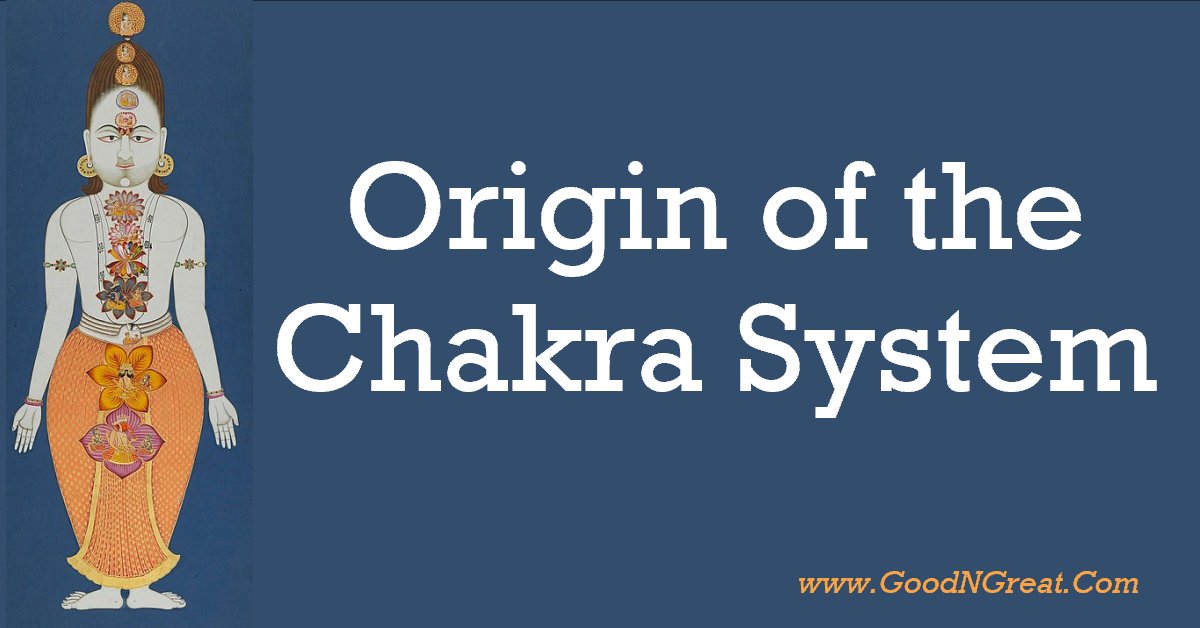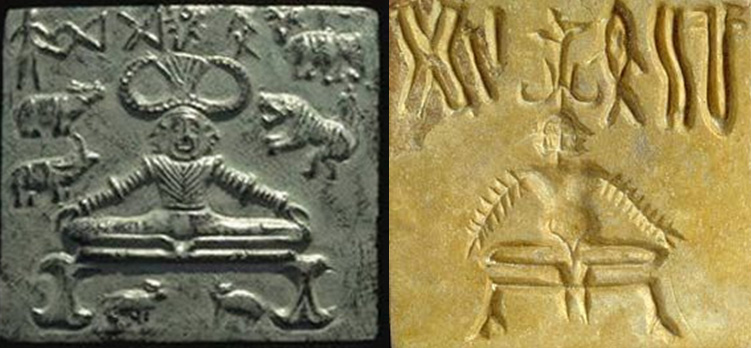Origin of the Chakra System: The History and the Legends

The history of the chakra system goes back to the Indus valley civilization, around 1500 and 500 BC. Probably the most well-known of the Mohenjo-daro seals is the “Pashupati” seal describes the chakra system for the first time.
Where a three-faced being wearing horned headgear is seated in a yogic trance, surrounded by Indus animals such as lions, elephants, and buffaloes. This was the time when Yoga was being practiced under the direct guidance of Guru and its spiritual value was given special importance. It was a part of Upasana and yoga exercises were inbuilt in their meditation techniques.

Origin of the Chakra System
What religion does Chakra come from?
The term chakra is a Sanskrit word. It comes from the yoga traditions of Hinduism. The word chakra means wheel or mystical energy circles. The term chakra refers to psycho-energetic centers in the subtle or nonphysical human body, (Sukshma sharira) discovered in ancient India. Sukshma sharira is the subtle body within Hinduism’s three-body philosophy. The sukshma sharira is made up of the vital life energy, breath, mind and the intellect.
Chakras in the Upanishads
The name chakra was found in the oldest text called the Vedas. The chakras as psychic centers of consciousness are first mentioned in the Yoga Upanishads (600 B.C.) and later in the Yoga Sutras of Patanjali (200 B.C.). The Yoga Upanishads are the collections of minor Upanishads. It includes Shandilya Upanishad, Teja Bindu Upanishad, Jabala Upanishad, Cudamoni Upanishad, and the Yoga-Shikka Upanishad.
7 Chakras in the West
The main text about chakras that has come to the West is a translation by the Englishman, Arthur Avalon (Sir John George Woodroffe), in his book,The Serpent Power published in 1919. These texts: the Sat-Cakra-Nirupana, written by Swami Purnananda in 1577, and the Padaka-Pancaka, written in the 10th century, contain descriptions of the centers and related practices. There is also another 10th century text, called the Gorakshashatakam, which gives instructions for meditating on the chakras. These texts form the basis of our understanding of chakra theory and Kundalini yoga today. These text has been the primary source of information on the chakras for most Western students of the seven main chakra system
What is a chakra? The original meaning of the word chakra as “wheel” refers to the chariot wheels of the rulers, called cakravartins. The word is defined as a spinning disk or wheel; a chakra on the human body is a spinning disk or wheel of energy that runs along the spine.
114 Chakras of Sri Amit Ray
There are seven main chakras along the spine. However, according the Rishi Amit Ray, there are as many as 114 all over the body. In 2005, Sri Amit Ray rediscovered the 114 chakras in the human body based on his oral traditions and profound meditation experiences. He identified the names, locations and functions of all the 114 chakras for the first time. The health of one’s chakras is directly connected to the health of the physical, mental, and the emotional well being of a person.

Original Chakra System Pashupati seal
Chakras the Modern Views
In modern view, chakras are often linked to nerve centers, glands and major organs in the body, and each of the seven chakras is said to correlate with different abilities, expressions and types of health and psychological states of the mind. Chakras balance two opposing forces. The balance between chakra excitation and chakra inhibition is crucial to healthy cognition and behavior. Glutamate and GABA are the two opposing neurotransmitters. Chakra system establishes a relationship between macrocosm and microcosm.
Sources: A Brief History of the Chakras in Human Body, N. Cooper